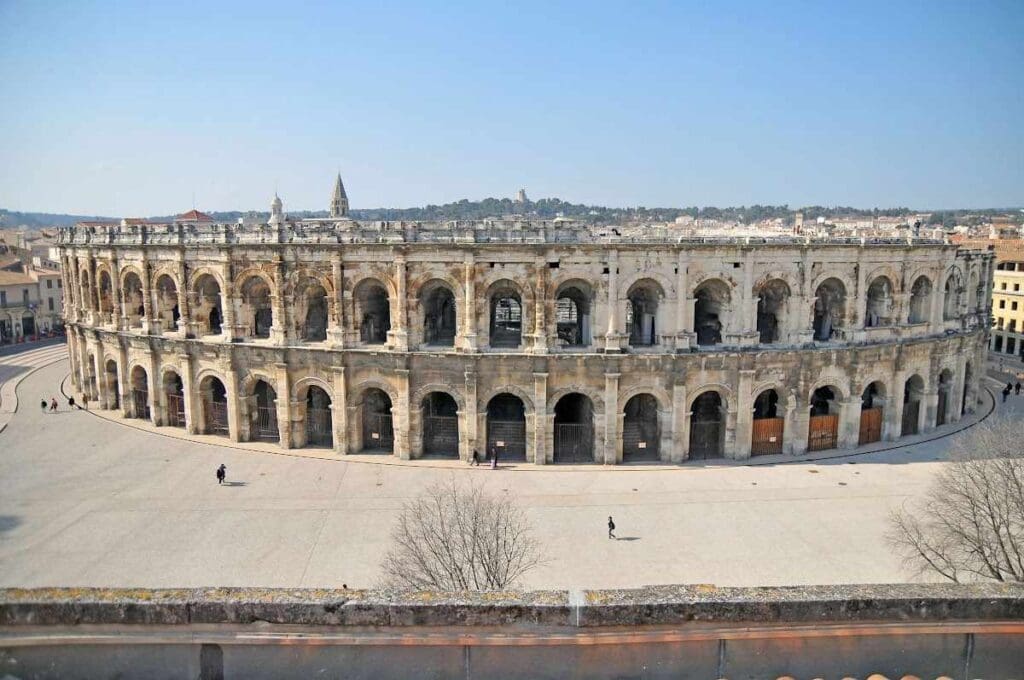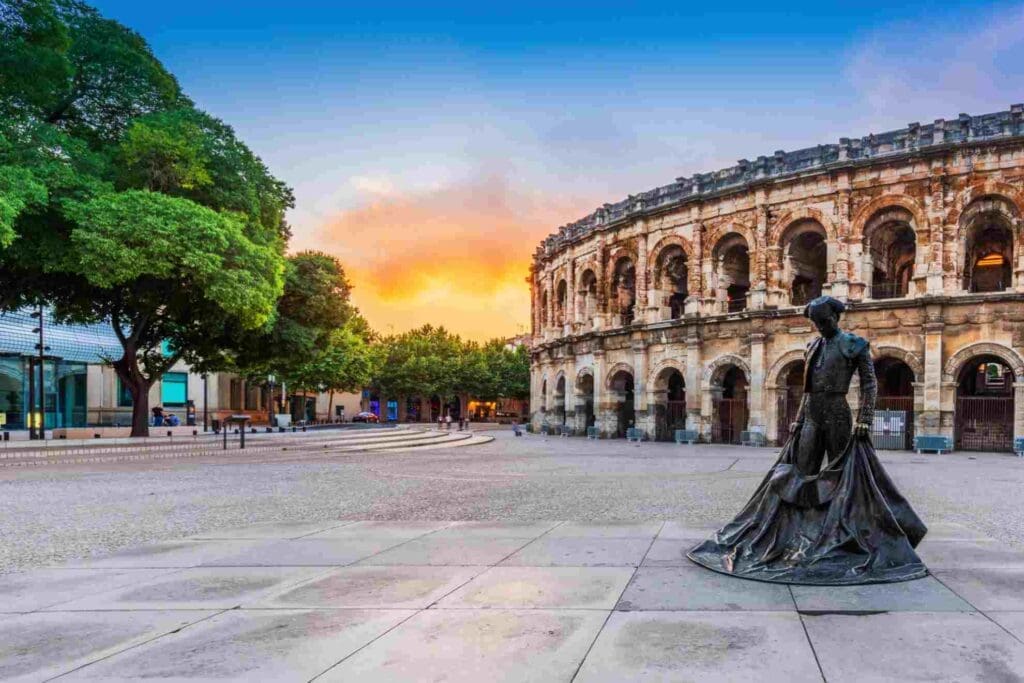The Following are Facts about the Nimes Amphitheater Arena
A Prime Roman Amphitheater:
The Nîmes Amphitheater, commonly referred to as the Arena of Nîmes, is recognized as one of the best-preserved examples of Roman amphitheaters still standing today. Situated in Nîmes, France, this remarkable structure is frequently likened to Rome’s Coliseum, although it is smaller and in even better condition.
Age of the Arena:
Built around 70 A.D., the Nîmes Arena is almost two thousand years old. Despite facing wars, invasions, and the effects of time, its structure has remained impressively well-preserved throughout the centuries.
Purpose of Construction:
Originally constructed for entertainment purposes, the arena hosted a range of bloodthirsty events, including gladiator battles and animal contests. These spectacles were designed not only to entertain but also to showcase the power and authority of the Roman Empire.
Architectural Design:
The Nîmes Arena is celebrated for its Roman architectural prowess. It features an elliptical shape with a seating capacity of about 34 rows. Measuring 133 meters in length and 101 meters in width, the central arena spans 68 meters by 38 meters. The tiered seating arrangement offered spectators optimal views of the events.
Capacity Over Time:
Originally accommodating approximately 24,000 spectators, the amphitheater was one of the largest in the Roman Empire. Today, it is used for concerts, sports events, and cultural festivals, hosting around 13,000 people. In ancient times, it was also known for chariot races, adding to its historical significance.

Significance in Roman Times:
In ancient Rome, the Arena of Nîmes was a key venue for social and cultural activities. It served as a hub for public entertainment and played a crucial role in showcasing Roman power and influence in the region, bringing people together through various events.
Use After the Roman Empire:
Following the fall of the Roman Empire, the amphitheater underwent several transformations. During the Middle Ages, it was repurposed as a fortress for knights and functioned as a defensive structure. Eventually, it evolved into a small village, with houses built within its walls.
Contemporary Use:
Today, the Nîmes Arena serves as a versatile venue for modern events, including concerts, bullfighting, and medieval-style gladiator reenactments. It has hosted performances by international music legends such as Elton John and Metallica, maintaining its status as a prominent cultural site.
Comparison to the Colosseum:
Often referred to as the “Roman Colosseum of France,” the Nîmes Arena is noted for its similar design to Rome’s Colosseum. However, unlike the Colosseum, the Nîmes Arena is in excellent condition, largely because it remained in continuous use and maintenance throughout its history.
Restoration Efforts:
Extensive restoration work has been carried out to preserve the arena’s architectural integrity. Starting in the late 19th century and continuing through the 20th century, efforts have focused on restoring the stonework, seating, and façade, ensuring the amphitheater remains a cherished historical landmark for future generations.

Nîmes Arena: An Integration of Past and Present: Facts about the Arena of Nîmes
- Location and Accessibility
Facts about the Nimes Amphitheater Arena is situated in Nîmes, a city situated in the south of France well known for hosting ruins of Roman colonies. It is is quite visible for the tourists as it is one of the tourism highlights of the region together with the Maison Carrée and the Pont du Gard.
- Concerts and Cultural Events
The thought does not consider the fact that the arena was not just something present in the days of ancient civilizations; it is something that continues to be present even up to this generation for venue of different entertainment activities. Annual events ranging from Music concerts, bull fighting point performances and historical reenactments with people trooping in from different parts of the world. Facts about the Nimes Amphitheater Arena
- Architectural Influence
The structure of the amphitheater in modeled contemporary stadia and arenas. The progressive stepped seating layout and the sophisticated crowd management principles which the amphitheatre represented were the architectural ideas adopted in designing the current day sports facilities and concert halls.
- Cultural Impact
The Arena of Nîmes plays a significant role in preserving and promoting Roman history in France. It stands as a symbol of the enduring legacy of Roman culture and its influence on European architecture and urban planning.
The Nîmes Amphitheater Arena is a living testament to the grandeur of Roman engineering and cultural influence. From its origins as a gladiatorial arena to its modern-day role as a cultural venue, the arena has adapted through the centuries while retaining its historical essence. Its blend of ancient history and contemporary use makes it a must-visit site for anyone interested in Roman history and architectural marvels. Facts about the Nimes Amphitheater Arena
Facts about the nimes amphitheater arena: FAQs
1. How old is the Arena of Nîmes?
A. The Arena of Nîmes is nearly 2,000 years old, built around 70 AD.
2. Why was the Arena of Nîmes built?
A. It was built as a venue for entertainment, including gladiatorial games, animal fights, and other public spectacles.
3. Where is the Arena of Nîmes located?
A. It is located in the heart of Nîmes, a city in southern France.
4. What is the Nîmes Arena used for today?
A. Today, it is used for concerts, bullfights, and cultural events, attracting thousands of visitors annually.
5. Why is the Arena of Nîmes important?
A. It is one of the best-preserved Roman amphitheaters, showcasing ancient Roman architectural brilliance and cultural heritage.
Facts about the Nimes Amphitheater Arena stands as a remarkable example of Roman ingenuity, continuing to captivate audiences with its timeless appeal and historical significance.





0 Comments